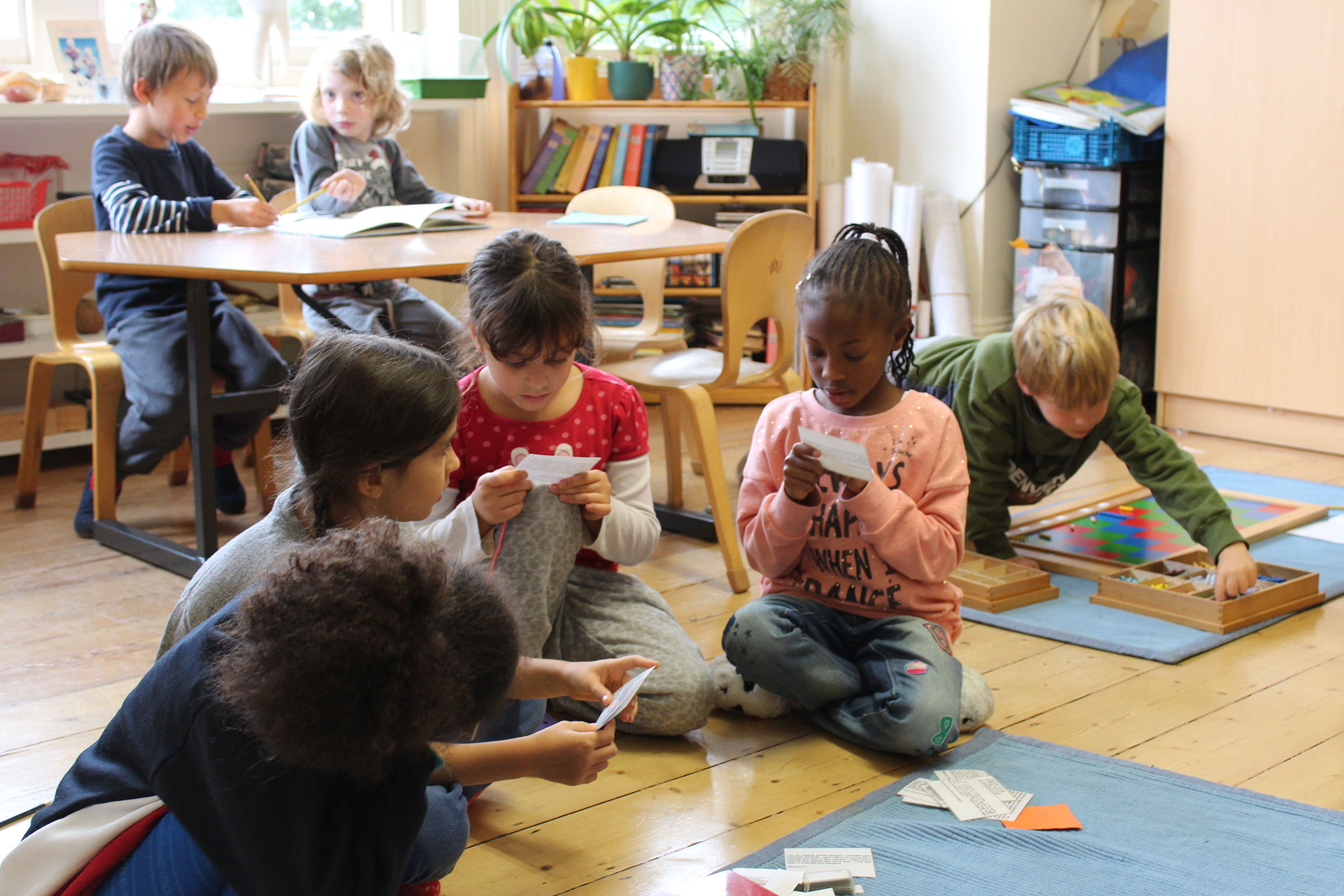There are two ways to address this question. If the reference is to a physical Montessori environment, a Montessori class/community our response can be simple: The environment must contain all of the prescribed materials that satisfy the developmental needs of the ages of the children in the group: 0-3, 2.5 – 6+, 6-12 or 6-9 and 9-12 and 12-18). Anyone can buy/make the materials for the physical environment.
The other way of interpreting this question is to look at what creates a Montessori environment. Any environment could contain the requisite Montessori materials but this does not make it a Montessori environment. A true Montessori environment is full of intangible characteristics. First of all, it is striking that this is an environment for children, not an environment for adults. The children are moving about the space carefully, aware of their bodies, aware of others and their occupations, respectful of each other and each other’s strengths and challenges. The materials the children choose to engage with are the children’s free choice – with the limit that they have some information about how to manipulate the materials. They will have received this information from an adult, from another child, or from watching another child receive a “lesson” from an adult. There are few, if any, full group gatherings – again depending on the age level. There is no “circle time”, no “story time”, etc. though you will often see gatherings of small groups for a specific purpose, reading, conversing, receiving a lesson on something, singing, etc. For 3 or more hours in a morning and again for 2 or so hours in the afternoon, the children are busy. They prepare a snack when they need one. They eat lunch together, with real plates and cutlery (no paper), in small groups, having conversations, cleaning up after themselves, etc. If someone needs rest, they take out a small mat and lie down for a while. They play outside or move their “inside” work outside, situation permitting. They are very knowledgeable of the structure of the community and respect it. They recognise the role of the various adults in the environment; the ratio of adults to children is dependent upon local regulations. There are rarely loud noises other than perhaps laughing. It is a peaceful environment where children exhibit symptoms of happiness, of contentment. They know this is their place.
